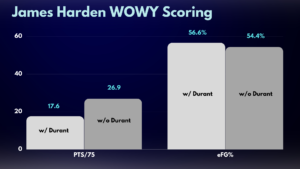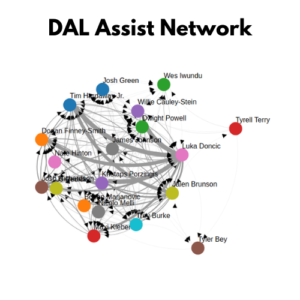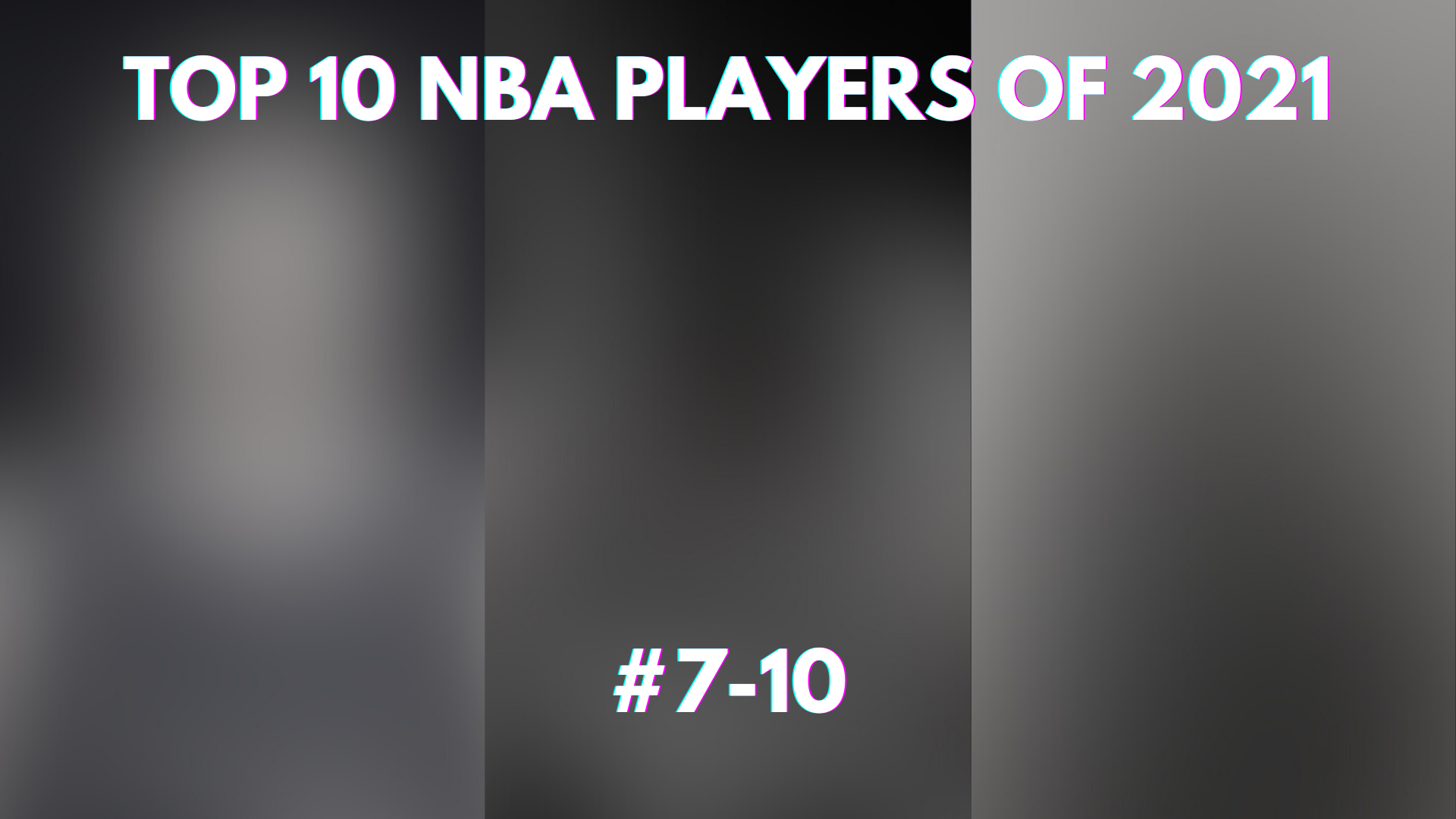Every year, I embark on the self-destructive journey of ranking the NBA’s very best players. Anyone who regularly consumes basketball content will likely have seen others attempt to answer the same question, perhaps to varying degrees of success and failure. But, in truth, the success or failure of a player ranking lies more in the process than in the results. A major criticism of a lot of lists is how one’s personal biases and incomplete heuristics are blended into the selection process. Namely, a ranker may feel their list is correct, but not necessarily why the list is correct. To avoid human error and misconception, the following strict criteria acted as the guideline to creating this year’s list:
Criteria
Consistent with my previous rankings, players are assessed based on how they impact success at the team level. Thanks to the revolutionary work from various basketball researchers, we have a great idea of not only which skills are most valuable, but also how much of an impact one player can have on a team’s success. I won’t belabor the topic, as I’ve engaged in many different conversations on it before, but this approach is antithetical to other, more common methods, which value skills next to one another based on the ranker’s personal belief system (a heuristic that isn’t guaranteed to be correct). To capture as much truth as possible, the value of different skills is viewed through my closest attempt to an objective lens.
The next major part of the list concerns not the player, but the team around him. The endgame for every NBA team (as far as on-court performance is involved) is a championship. However, if we evaluated players based only on how he affects his own team’s title odds, a chunk of the league’s most talented players would lose their due representation. Paired with the fact that teammate synergies and coaching can actually cloud the strengths and weaknesses of a player’s value, the “title odds on a random team” criterion was adopted. (Note: The “economic” side of basketball isn’t included in these evaluations, e.g. contracts, salaries, enticement for free agents.)
Perhaps the largest theme of this ranking, however, is how to react to single-season performances. Similar to the aforementioned factor of team construction around a player, the opponents a player’s team faces also play similar roles in augmenting, for example, box scores. Rudy Gobert received hearty criticisms for his ostensibly poor defensive performance against the Clippers in the second round, but more astute viewers noted the collapse of Utah’s perimeter defensive plan that led to an emphasized stress on Gobert to concede more long jumpers. The Clippers were a textbook “bad matchup” for a player of Gobert’s style, and while there are deeper conversations about drop coverage in the Playoffs, a lot of Gobert’s heavy scrutiny can be identified as an overreaction to results heavily influenced by situation.
Because league-wide offensive efficacy has been shattering glass ceilings in the past two seasons, paired with the perceived psychological effects of zero fans in the stadium, larger-sample three-point shooting percentages are losing descriptive power. This is an example of where this list accounts for “good” and “bad” luck, and as the ultimate goal is to capture a player’s tangible skill and value, these rankings can be considered both retrodictive and predictive; meaning, there are instances in which the past sheds light on the present, and that reference points still hold value in these types of contexts. So while lucky or streaky box scores can be “appreciated,” that’s not the purpose of this list.
Lastly, but certainly not least, this list ranks players at their fullest health, meaning players who suffered injuries won’t be penalized.
Honorable Mentions
There was a number of other players I considered as top-10 candidates for this list, although I’d slightly struggle to see one of the following players bumped from the final cut. Namely, my reasonable floor for these top-10 players will still hold more impact than my reasonable ceilings for the remainder of the top-15. The best of the rest for me were, in alphabetical order, and are not limited to: Jimmy Butler, Paul George, Rudy Gobert, and Damian Lillard.
The List
10. James Harden (BKN)
Despite having been traded to arguably the league’s best offensive team partway through the season, Harden once again carved out another ball-dominant role highlighted by his operation in spread pick-and-roll. Although he wasn’t the statistical outlier he was in previous seasons, Harden possessed the ball for 8.6 seconds per possession in his stints with both Houston and Brooklyn, which was good for third in the entire league during the regular season. And, thanks to the wondrous spacing capabilities from teammates like Kevin Durant and Joe Harris, Harden had even more room to work with. This led to one of Harden’s best-scoring postseasons in recent history in which he scored 22 points per 75 possessions on +11.5% relative True Shooting.
The most glaring statistical trend in Harden’s profile this season has been his volume scoring, which, two years removed from posting the highest regular-season scoring rate in league history, settled at a more pedestrian 25 points per 75 in the regular season. While comparable numbers in his first few games in Houston can be attributed to off-court issues leading up to opening night, Harden’s volume scoring still seems elite. During 301 minutes with Kevin Durant on the floor, Harden averaged an uncharacteristic 17.6 points per 75 as opposed to 26.9 points per 75 in 1,017 minutes spent without Durant. Evidently, there was some clash between the two as on-ball scorers during their shared time, but these minutes also combined to produce an offensive rating of 125 during the regular season.

A lingering question with Harden had always been whether he could adopt a more movement-heavy role alongside more ball-dominant teammates, as his off-ball efficacy has drawn strong comparison to cacti in the past. This season served as an indicator, and although Harden played a similarly ball-dominant role relative to his other star teammates, there was a slight uptick in general activity off the ball. However, his movement never took off as some of his stronger believers had hoped for, as he ranked in the 8th percentile among players in his percentage of offensive possessions that involved scoring off screening action and cutting to the basket.
Defensively, there wasn’t a whole lot of change for Harden. To my viewing, his perennial lack of true engagement held, and that led to very little value as a help defender. While Harden does have strengths on that end, he seemed to lack the anticipatory recognition that would make him a clear positive. His “gambling” style also carried over from previous seasons; as, despite his aforementioned lack of good awareness, he was in the 66th percentile of “Passing Lane Defense” (bad pass steals + deflections per 75) and deflections per 75 possessions. Harden’s stout frame still allowed him to function well as an interior defender. He was actually in the 65th percentile in block rate and the 90th percentile in block rate on contests.
Fun Fact: According to BBall-Index matchup data, Harden spent the largest proportion of his defensive possessions (14.6%) against the “stretch big” archetype.
9. Joel Embiid (PHI)
It was painfully difficult to slide Harden to the back end of the list this season, but that’s in part due to the unique, outlier-ish effectiveness of Joel Embiid. Last season, there was evidence that suggested big men who primarily play drop coverage in the Playoffs are more likely to be met by bad matchups; and more specifically, excellent shooting teams who can punish space inside the arc with their midrange shot. However, Embiid seems to be a bit of an exception here. I noted that he contested very few threes and was reluctant to close out during his film study, and this is corroborated by the stat sheet, as he only contested two of these shots every 75 possessions he was on the floor.
I view Embiid as special because, despite this style that baits great shooters, he still seems to be an elite defender in the Playoffs. Embiid doesn’t stand up to the interior heavyweights like Rudy Gobert, but Philadelphia’s defense was a modest two points better per 100 with him on the floor. Paired with his clear improvements on offense, and Embiid is starting to look more and more like a legitimate MVP candidate. Granted, he’s still not a great or even good passer, but there are some positive signals. Looking at the diversity of the locations of his assists along with the play types on which they were accrued, Embiid almost looks like an above-average passer in spurts. To my eye, his vision is also continuing to improve, and his increased clarity of the corners gives him a strong outlet when met with trapping schemes to leverage Philly’s excellent shooting teammates.
Meanwhile, there’s also a lot of positives about his movement off the ball. He would constantly hunt for offensive rebounding positions, mimicking what made ’50s stars like Bob Pettit great by resetting possessions for his team. Embiid spends a lot of his off-ball possessions as a roll man as well, placing in the 94th percentile in the proportion of his team’s likewise possessions in which he was the roller. And, relative to league-average efficiency, Embiid’s per-75 impact as a roller was also in the 94th percentile among players this season. He’s also making strides as a cutter, with about 27% of his half-court possessions characterized by a cut, but his efficiency on these plays was particularly worse.
Fun Fact: Embiid was at the top of the league this season with 14.5 isolations per 75 possessions, 25% of which were on the perimeter and 75% in the post.
8. Luka Doncic (DAL)
The Slovenian superstar is quickly ascending to MVP levels as the quarterback of one of the NBA’s most promising offensive teams. While the Mavericks couldn’t replicate last season’s offensive heights in an increasingly competitive offensive landscape, Doncic got even better. It’s possible he’s currently shouldering the largest offensive load of any player in the history of the sport! During the regular season, his time of possession of 8.9 seconds led the entire league, and that number skyrocketed to 12.1 seconds in the postseason. (Trae Young was second in the Playoffs at 9.6 seconds.) As one of the league’s defining heliocentric stars, almost all of Dallas’s offense runs through Doncic.
His passing and shot creation are his strongest attributes, and they go hand-in-hand while Doncic will continue to unlock historical offensive heights. Similar to Harden, Doncic runs a lot of spread pick-and-roll with high-set screens, and all the space this creates allows him to inflict a lot of damage on Dallas’s opponents. When the Mavericks send a roller to the paint, Doncic leverages his incredible anticipation to place a pass at the apex of his teammate’s jump. Perhaps Doncic drives to the basket. His scoring threat and unique finishing capabilities are enough to collapse some defenses, and this leads to his excellent passing. Doncic loves to hit the corners for high-value shots, and 43% of his drives ended with pass-outs while 11.2% of his drives led to assists.

PBPStats
Doncic may have the most effective on-ball offensive package in the league right now. The limiting factor for me is his activity off the ball. To my viewing, he never quite exhibited the ability to create offense without the ball and mostly resorted to catch-and-shoot and post-up movements. However, Doncic is not a great catch-and-shoot scorer (43rd percentile) but he is effective in the post, able to score efficiently and draw fouls at league-leading rates. Doncic’s lack of a true off-ball repertoire is one of the reasons I don’t rank him as highly as others may, and these types of skills are especially important in being able to provide value to contending teams. It’s clear that Doncic is more of a floor raiser than a ceiling raiser, but can he provide the same mega-value alongside another perimeter star who demands the ball?
The other big reason I drop Doncic down a few spots is that he concedes impact on the defensive end. He’s certainly a relatively skilled defender. Although he doesn’t face these types of players often (8% of his defensive possessions), Doncic is an abled man defender against athletic finishers and shifty guards who pressure the rim. He shuffles his feet quite well and provides a big body in the post versus smaller guards like Steph Curry or Damian Lillard. There are also signals that he could potentially grow into a cerebral off-ball defender. Doncic is an engaged defender when his man doesn’t have the rock, making clear attempts to cover open ground to prevent a high-value shot. He also uses his uncanny physical strengths to navigate screens fairly well, going over the screen while minimizing contact with the opponent.
Fun Fact: During the seven-game series against the Clippers in the first round, the Mavericks’ offense was 30 points per 100 more efficient with Doncic on the floor than off.
7. Kevin Durant (BKN)
Earlier in the season, I assumed James Harden’s larger offensive load would result in him being the driver of Brooklyn’s elite offense. But now, I’m starting to think that it’s actually been Kevin Durant. During 1,017 minutes with Harden on the floor and Durant off the floor, the Nets put up a spritely 120 points per 100 possessions. But during 855 minutes with Durant on and Harden off, that number improved to an even-greater 125 points per 100. If we include the Playoffs in that sample size, the gap narrows, but it creates enough uncertainty that I wonder whether Durant’s mixture of on and off-ball play is more valuable to the Nets than Harden’s heavy isolation frequency and ball-pounding.
Despite a devastating Achilles tear in the 2019 Finals, Durant has lost very little offensive ground to his younger self. He remained one of the league’s very best scorers, averaging 30 points per 75 on True Shooting +10% ahead of the league. His isolation game also held strong, averaging 5.6 isolations per 75 on 1.2 points per shot. But I’m also wondering if his playmaking has taken a tiny leap forward. A large part of it may be the expansive space Durant has to work, but he seemed generally willing to throw touchdown passes every once in a while. He passes well out of traps, not just by using his height, but by splitting two defenders with his bounce passes. Paired with a great passing gig with Brooklyn’s cutters, Durant was a versatile passer this season. He placed in the 93rd percentile in the “Passing Versatility” statistic that looks at the variability of his assist locations.
Durant was slightly more fragile this season with his vertical leaping, but intelligent play and great lateral movement lead me to believe he adds positive value on that end. And at the end of the day, this positive defense is what separates him from other offensive stars like Doncic and Harden. Durant covered most of his rotations, exhibiting the same ability to track his matchup and the movement of the ball similar to lots of other smart team defenders in history. He was also an effective interior defender. Durant didn’t deter these attempts like the league’s defining paint protectors, but he was in the 98th percentile in block rate on shot contests and the 85th percentile in his opponent’s field-goal percentage at the rim over expectation.
Fun Fact: Durant was in the 36th percentile in one-year adjusted offensive rebounding rate but the 94th percentile in adjusted defensive rebounding rate.
Up Next
My next post will continue this series with profiles for the fourth, fifth, and sixth-best players on my top-10 list. I’ll discuss the “high” and “low bands” for which I could reasonably see players swapped in later editions; the final rankings can be thought of as the point estimates. Comment down below any disagreements, surprises, or thoughts on these players!

Leave a Reply